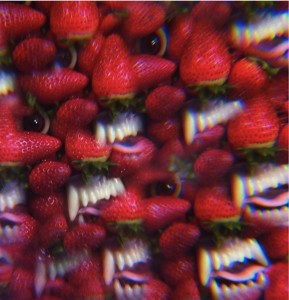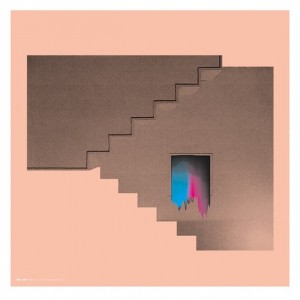Douglas Martin is a pioneer of modern National Basketball Association fashion.
For this piece, I was considering a long-ass intro, detailing the dearth of Dirty Shoes this year. I could claim to have taken a mental health day — er, half-year, but that’s not the whole truth. I could claim that I was busy getting ready for the NBA Playoffs as Russell Westbrook’s body-double, but anybody who cares about basketball knows I got taken out of that job way too early. (Plus, I’m a little soft in the middle to be all that convincing. Too many tacos and not enough sit-ups, I guess.) But I’ll save you all of the ponderous reasoning as to why I’m back and will just enjoy being back. Therefore, I present to you, in reverse-alphabetical order, ten of the year’s most excellent guitar albums which I’m sure I would have written about had I not been missing. Time to put that sneaker cleaner away, because Douglas Martin’s back home.
White Fence – Cyclops Reap (Castle Face)
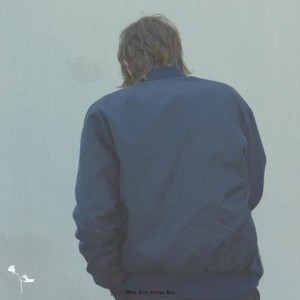 Anybody who knows anything about White Fence-sitter Tim Presley knows that he takes the term “prolific” to astonishing new levels. For each of his previous four solo albums, he’s recorded a rough average of about thirty songs that didn’t make the final cut. (And that’s just a rough average.) His fifth album released in the past three years was supposed to be a collection of outtakes spawned from his insane work ethic, but the recording bug got to him again and only one (“Make Them Dinner at Our Shoes,” recorded in 2009) made the final cut.
Anybody who knows anything about White Fence-sitter Tim Presley knows that he takes the term “prolific” to astonishing new levels. For each of his previous four solo albums, he’s recorded a rough average of about thirty songs that didn’t make the final cut. (And that’s just a rough average.) His fifth album released in the past three years was supposed to be a collection of outtakes spawned from his insane work ethic, but the recording bug got to him again and only one (“Make Them Dinner at Our Shoes,” recorded in 2009) made the final cut.
Going through his older work must have had its influence, as Cyclops Reap is closer-hewn to White Fence than Presley’s weirder, more sprawling other albums. Presley remains a top-notch producer of trippy garage-pop and a brilliantly elliptical songwriter, as most of the songs here — especially the glittery, dream-like “To the Boy I Jumped in the Hemlock Alley” (also my vote for Best Song Title of 2013) — are among some of the best Presley has recorded to date. Though the original purpose for this album is totally understandable, it’s kind of unnecessary for an artist to look back when they just keep getting better.
Savages – Silence Yourself (Matador)
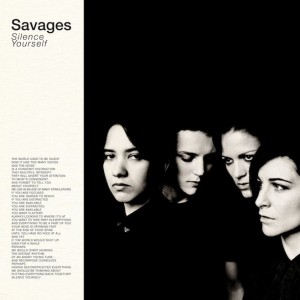 Joy Division, jet-black clothes, and John Cassavetes. Even if you haven’t read singer Jehnny Beth’s blog, even if you haven’t read their manifestos on Instagramming your experience or even the one on the cover of their debut album, you’ve probably gathered enough to know Savages are a Very Serious Bunch. Spoiler alert: There’s not even a hint of levity on Silence Yourself. It’s a visceral, brutal, punishing thirty-eight minutes; music delivered completely in grayscale. Basically, if you want all the music you listen to to feel as good as listening to 2 Chainz, you may not want to touch this with a ten-foot pole.
Joy Division, jet-black clothes, and John Cassavetes. Even if you haven’t read singer Jehnny Beth’s blog, even if you haven’t read their manifestos on Instagramming your experience or even the one on the cover of their debut album, you’ve probably gathered enough to know Savages are a Very Serious Bunch. Spoiler alert: There’s not even a hint of levity on Silence Yourself. It’s a visceral, brutal, punishing thirty-eight minutes; music delivered completely in grayscale. Basically, if you want all the music you listen to to feel as good as listening to 2 Chainz, you may not want to touch this with a ten-foot pole.
But the darkness in Silence Yourself carries an allure that is absolutely magnetic. People constantly comparing Beth’s howling goth charisma to that of Siouxie Sioux is mostly accurate, except that the former has a ferocious stage presence that definitely comes out in her recorded vocals. Gemma Thompson sounds like she’s scraping her guitar when she’s not strangling it and making it scream in harsh, anguished tones. The rhythm section of drummer Faye Milton and bassist Ayse Hassan approach their instruments in a way that singlehandedly justifies the band’s name. Even with all that, the songwriting is just as pummelling, as Beth sings gutturally about dehumanization, sexuality, violence — sometimes all three finding space in the same couplet.
I saw Savages live in April (coincidentally, in Seattle, where the infamous “Silence Your Phones” note started its run), and although I’m sure I’m no stranger to hyperbole, I honestly feel it had to be our generation’s equivalent to seeing Joy Division in 1980. A serious and seriously great band was standing before my very eyes, draped in all black and eviscerating me and virtually everybody I know with a death blow of classic post-punk. The best thing I can say about Silence Yourself is that it almost measures up to seeing them live, it almost captures that energy I felt bursting through my chest. But there’s also nothing like holding the first recorded full-length document of an already scarily fully-formed band that will very likely only improve from here. There’s no smiling with Savages, but they’re a band worth being serious about.
Purling Hiss – Water on Mars (Drag City)
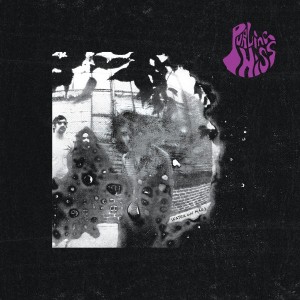
Nabokov by way of vintage Nirvana (“Lolita”). Tom Petty cranked up to 11 and even more freewheeling (“Mercury Retrograde”). The classic-rock canon as interpreted by J. Mascis (“Rat Race”). A troubadour with an acoustic guitar and a penchant for stoner poetry (“Dead Again”). Kurt Vile’s brother-in-arms (“She Calms Me Down”). Indie-rock’s foremost purveyor of Pontiac Trans-Am bangers (“Face Down”). Proof that Pavement were only feigning their ignorance of classic-rock radio (“The Harrowing Wind”). Psych jammers whose lead instrument is the buzzsaw (“Water on Mars”). Craftsmen of sweet ballads briefly containing wah-wah pedals (“Mary Bumble Bee”). If all of Purling HIss’ albums prior to this was just Mike Polizze fucking around — and they very likely were — Water on Mars shows that with his talent, he could have gone legit years ago and had albums that sound this good.
Thee Oh Sees – Floating Coffin (Castle Face)
I might as well get this out of the way first: In spite of its album cover among the greatest of the weird-ass art that Oh Sees records come in (this is the greatest, by the way), Floating Coffin is a relatively minor work in Thee Oh Sees’ discography. It’s not as great front-to-back as, say Help or Dog Poison. It’s not a completely bizarre masterpiece like Castlemania, nor does it have the audacity of leading off with a 13-plus-minute song like “Warm Slime.” It doesn’t have all members of the band firing on all cylinders like Carrion Crawler/The Dream. But even so, every Oh Sees album is stellar in its own right, and Floating Coffin finds the band looking for new ways to do what they already do better than most bands working.
“Toe Cutter/Thumb Buster” finds the band (again) trying the quiet-loud-quiet Pixies songwriting dynamic with excellent results. The album’s title track is a blitzkrieg of noise from start to finish, while “No Spell” is diaphanous yet insistent, like a krautrock jam played at half-volume. “Strawberries 1 + 2” starts off as a shot of adrenaline and then mellows out into a narcotic haze in brilliant fashion, while “Night Crawler” is a fist-pumper in every sense of the word. And you can’t fault a record that has a live favorite for over two years finally placed into recorded form (“Minotaur”). The fact that Floating Coffin isn’t anywhere near the best Oh Sees album but is decidedly one of the best rock albums of the year is saying a lot about their greatness.
No Joy – Wait to Pleasure (Mexican Summer)
Though they got their rep for being (and, really, they still are) ear-splitting guitar slingers on the shortlist for Loudest Fucking Band in North America, there were hints of dreamlike bliss on Ghost Blonde, No Joy’s excellent debut full-length. But with time and better recording equipment, they’ve managed to take all of their talents widescreen, and singles like “Hare Tarot Lines” and “Lunar Phobia” (along with deep album cuts “Wrack Attack,” “Pleasure,” and “Uhy Yuoi Yoi”) showed a side of the Montreal band most people assumed they never had.
But their time in the studio didn’t make them soft or needlessly weird by any means: The record’s barnburners — “E,” “Slug Night,” “Lizard Kids,” and “Ignored Pets” — are among the best songs the band has recorded to date, sure to blow your hair back and blowout your eardrums with equal panache. On their sophomore record, No Joy has figured out the perfect way to take you into the clouds before smashing you in the face, providing you with an experience that will make it hard to believe you’ve been on solid ground the whole time.
The Men – New Moon (Sacred Bones)
If you ask me, the Brooklyn band’s decision to open their fourth record with a pastoral country shuffle was one of the most punk moves they’ve ever pulled out. Of course “Open the Door” is a total red herring, thrown for the sake of fucking with audience expectations. But it’s still not all that far-removed from the rest of New Moon, with acoustic guitars being strummed and the vibe of the Catskills swaying in the breeze. In fact, songs like “Country Song” and “Candy” were blatant points of foreshadowing, clearly signifying their transition to Crazy Horse-drawn punks.
But as a record that’s supposed to be the follow-up to the big breakout, nobody could have expected New Moon to be even more roughshod than Open Your Heart (and, arguably, even punk-as-fuck Leave Home), the recording sounding scraped on sandpaper going into mastering. Even still, New Moon possesses the Men’s most assured writing to date. “The Seeds,” “Electric,” “The Brass,” and “I See No One” take the style they toyed with on Open Your Heart and evolved thoroughly, while the freewheeling (and subsequently out-of-control) “I See Her Face” is very likely the best song the band has written yet. New Moon is a vast improvement on an already tremendous catalog, and what’s scary is that you get the feeling these guys are nowhere near their peak yet.
Julian Lynch – Lines (Underwater Peoples)
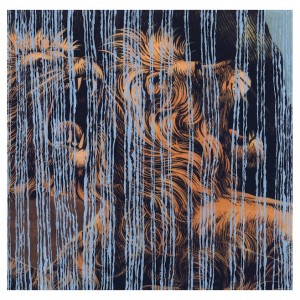 A friend of mine once called Julian Lynch “Sufjan Stevens for weedheads,” and I suppose there’s some validity to that claim. Both make tunes that are a little more studied, a little more highbrow than your standard indie-rock fare. There are woodwinds and elaborate time signatures at every turn. But while Sufjan mostly constructs everything with broad pop appeal (well, as far as indie-rock standards go), Lynch isn’t afraid to let his clarinets squawk and squall, and his songs feel more like excursions through unbeaten paths than grandiose pop songs. Rhythms come from unlikely places, afro-pop basslines gloriously buoy banjo-led jamming, and Lynch is at the center of it all, with his boyish, Phil Elverum, just-woke-up-from-a-really-
A friend of mine once called Julian Lynch “Sufjan Stevens for weedheads,” and I suppose there’s some validity to that claim. Both make tunes that are a little more studied, a little more highbrow than your standard indie-rock fare. There are woodwinds and elaborate time signatures at every turn. But while Sufjan mostly constructs everything with broad pop appeal (well, as far as indie-rock standards go), Lynch isn’t afraid to let his clarinets squawk and squall, and his songs feel more like excursions through unbeaten paths than grandiose pop songs. Rhythms come from unlikely places, afro-pop basslines gloriously buoy banjo-led jamming, and Lynch is at the center of it all, with his boyish, Phil Elverum, just-woke-up-from-a-really-
La Luz – Damp Face EP (Burger)
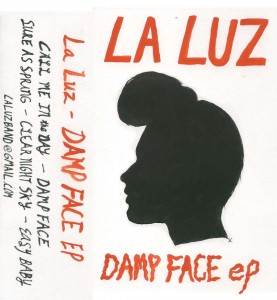
We are years past the insulting notion of calling a band a “girl-group” just because they have all female members, but Seattle’s La Luz are a girl-group in the purest sense of the word. Containing everything short of Phil Spector’s Wall of Sound, the band’s floaty, chiffon harmonies and classic song structures contain broad hints of surf-rock, and the lyrics are sensitive and uncomplicated without sounding too mawkish, a feat that isn’t as simple as you’d think it would be. Bookended by their two best songs — the slinky “Call Me in the Day” and the striking prom ballad-like “Easy Baby” — Damp Face is the initial document from a band that’s at the very least going to spark some very intense summer makeout sessions.
Grouper – The Man Who Died in His Boat (Kranky)
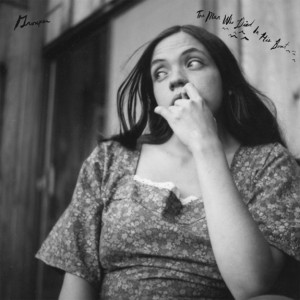 Five years ago, Liz Harris recorded and released Dragging a Dead Deer Up a Hill, in my personal opinion one of the most vital musical documents of the past five years. WIth that album, Harris took a form of music that’s generally equated to intimacy and directness (this being folk music, of course) and added ambience, distance, and most importantly, mystery to that style. Dead Deer was an enigmatic record, one in which multiple listens still couldn’t skim the surface of all that was hiding underneath. The songs that made up this year’s The Man Who Died in His Boat were reported culled from the Dead Deer sessions, and its stark beauty is unmatched by anything except for its predecessor. “Cover the Long Way” traces the melancholy allure of Dead Deer’s “Heavy Water (I’d Rather Be Sleeping,” while the album’s title track create a blurry, iridescent landscape all its own. It’s easy to listen to records and get lost in your own world, but Grouper has always been the type of artist to bring her world to you with all its wonder, and The Man Who Died in His Boat goes very far to prove that Liz Harris’ cutting room floor is probably littered with gemstones that would take lesser artists years to cultivate.
Five years ago, Liz Harris recorded and released Dragging a Dead Deer Up a Hill, in my personal opinion one of the most vital musical documents of the past five years. WIth that album, Harris took a form of music that’s generally equated to intimacy and directness (this being folk music, of course) and added ambience, distance, and most importantly, mystery to that style. Dead Deer was an enigmatic record, one in which multiple listens still couldn’t skim the surface of all that was hiding underneath. The songs that made up this year’s The Man Who Died in His Boat were reported culled from the Dead Deer sessions, and its stark beauty is unmatched by anything except for its predecessor. “Cover the Long Way” traces the melancholy allure of Dead Deer’s “Heavy Water (I’d Rather Be Sleeping,” while the album’s title track create a blurry, iridescent landscape all its own. It’s easy to listen to records and get lost in your own world, but Grouper has always been the type of artist to bring her world to you with all its wonder, and The Man Who Died in His Boat goes very far to prove that Liz Harris’ cutting room floor is probably littered with gemstones that would take lesser artists years to cultivate.
Burnt Ones – You’ll Never Walk Alone (Burger)
Packed with hook after hook, bleary-eyed noise, and a vague sense of menace underneath all the fun they’re having, the Bay Area trio combine glammy garage-rock with the buzzsaw squall of Spacemen 3 and never relent on their keen sense of melody. Lacking the occasional nihilism of spiritual forebears Crocodiles, Burnt Ones manage to cover a lot of ground in You’ll Never Walk Alone’s 33-minute run time. Many of the album’s songs are anthemic fist-pumpers with quiet, sweet moments tucked in between, all skewed a little left-of-center. By the time you hit the worn-out majesty of closer “Move On,” there’s very little else you can do but play it again on full blast and make your neighbors think you’re cutting wood in your garage.


